CMN 406
Communication in an Indigenous Context

1. Course Description
This course studies the nature and function of communication by, for, and about Indigenous peoples in both historical and contemporary settings. Students will take an expansive view of both text and textual analysis as they explore material culture (rock art, birchbark scrolls, wampum belts), historical documents and narratives (oral histories), policies and legal documents (treaties, statutes), and popular media representations. Indigenous theory will be the guiding framework for the course, but students will also be exposed to a range of other theoretical perspectives.
Last Revised
Delivery
Lecture: 2 hours, Lab: 1 hour
2. Course Objectives & Learning Outcomes
- To understand the ways in which communication has impacted Indigenous people on Turtle Island
- To analyze the ways in which Indigenous knowledge and worldview(s) differ from mainstream perceptions and knowledge systems
- To identify appropriate ways of engaging in conversations about Indigenous peoples and issues
- To situate contemporary communications by, for, and about Indigenous people within a larger historical context
Additionally, graduate students will be able to:
- Understand, explain, and make use of digital media options for communication
- Apply basic principles of event management and communication planning
- Identify and produce scholarship that is informed by Indigenous research methodologies
3. Topics Covered
- Introduction
- Anishinaabe Prophecy
- Residential Schools & Child Welfare System
- Settler Colonial Studies
- Indigenous Theatre
- Indigenous Literature
- Indigenous Visual Art (Traditional and Contemporary)
- Indigenous Theory
- Indigenous Media
- Indigenous Law & Policy
- Indigenous Activism
4. Teaching Method
Lectures
Students are expected to attend class each week and will be graded on participation.
Graded Assignments
In addition to in-class participation, students will be evaluated on weekly journal entries, presentations and a final essay assignment.
5. Course Materials
Course Readings
● Elliott, A. (2019). A Mind Spread Out on the Ground. Doubleday Canada, a division of Penguin
Random House Canada Limited, 2019.
● Manuel, A., & Derrickson, R. (2017). The Reconciliation Manifesto: Recovering the Land,
Rebuilding the Economy. James Lorimer & Co.
● Maracle, L. (2012). Ravensong: A novel. Canadian Scholars’ Press Inc.
● Merasty, J. A., with Carpenter, D. (2017). The Education of Augie Merasty: A Residential School
Memoir. University of Regina Press.
● Supplemental text required for presentations: Vowel, C. (2016). Indigenous Writes: A Guide to
First Nations, Métis & Inuit Issues in Canada. HighWater Press. (Available online through the
University library.)
6. Policy
6.1 University Policies
Students are required to adhere to all applicable university policies found in their Online course shell in D2L and the Course Outline Policies.
6.2 Print and Digital Copying Guidelines:
Toronto Metropolitan University complies with Canada’s Copyright Act which protects both creators/owners and users of copyrighted materials. Students should familiarize themselves with TMU Copyright policies and procedures, and contact the Copyright and Scholarly Engagement Librarian at copyrt@ryerson.ca for questions, concerns and clarification of the copyright rules.
6.3 Turnitin.com
Turnitin.com is a plagiarism prevention and detection service to which Toronto Metropolitan University subscribes. It is a tool that helps instructors determine the similarity between student work and the work of other students who have submitted papers to the site (at any university), Internet sources, and a wide range of books, journals, and other publications. While it does not contain all possible sources, it gives instructors some assurance that students’ work is their own. No decisions are made by the service; it generates an “originality report,” which instructors must evaluate to judge whether something is plagiarized.
Students agree by taking this course that their written work will be subject to submission for textual similarity review to Turnitin.com. All submitted papers will be included as source documents in the Turnitin.com reference database solely for the purpose of comparing the similarity of such papers. Use of the Turnitin.com service is subject to the terms-of-use agreement posted on the Turnitin.com website. Students who do not want their work submitted to this plagiarism detection service must, by the end of the second week of class, consult with their instructor to make alternative arrangements. Even when an instructor has not indicated that a plagiarism detection service will be used, or when a student has opted out of the plagiarism detection service, if the instructor has reason to suspect that an individual piece of work has been plagiarized, the instructor is permitted to submit that work in a non-identifying way to any plagiarism detection service.
6.4 Email Communication
Toronto Metropolitan University requires that any official or formal email communication from students be sent from their official Toronto Metropolitan University electronic accounts.
6.5 Video and Audio Recording
No video or audio recording is permitted in class without the express permission of the instructor.
7. Learning Management System
Toronto Metropolitan University supports Brightspace by D2L as its official Learning Management System. University Policies governing Brightspace have been documented at the Courses @ Toronto Metropolitan University Privacy and Security website.

